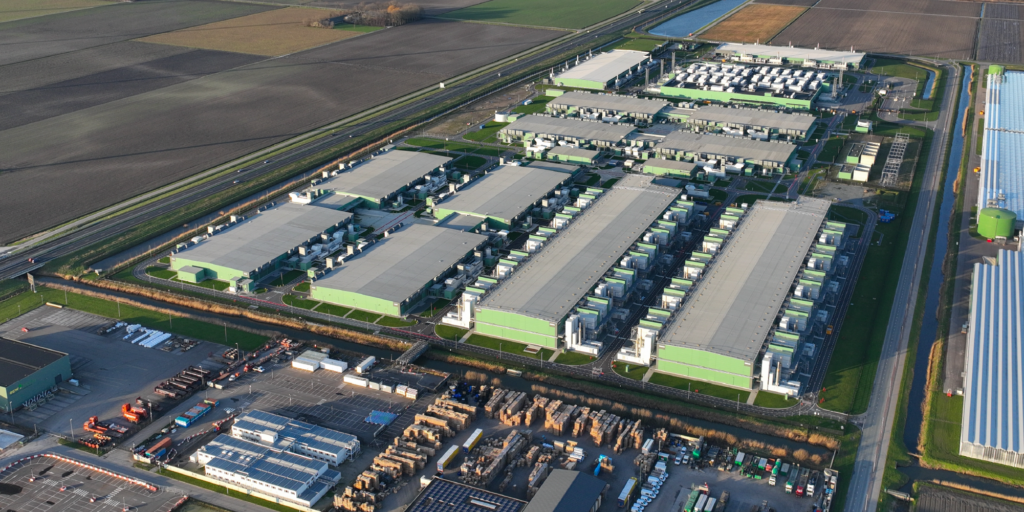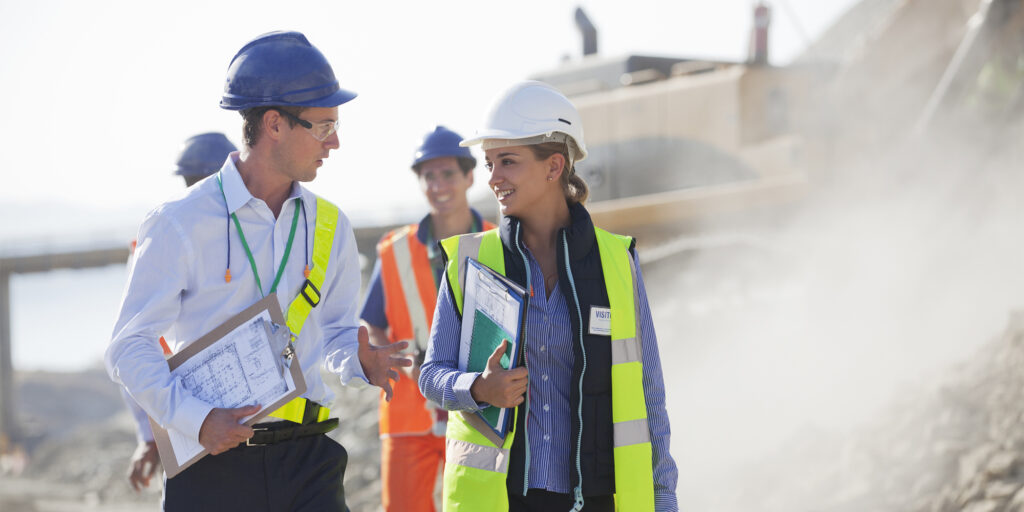— 6 min read
Mastering Construction Planning: A Comprehensive Guide
Last Updated Jan 13, 2025
Last Updated Jan 13, 2025

In the fast-paced world of construction, effective planning is not just a task; it’s the foundation of project success. With multiple stakeholders involved and countless moving parts, the stakes are high—one misstep can lead to costly overruns and delays. That’s why mastering construction planning is essential for delivering projects on time and within budget.
Construction planning is an umbrella concept covering all stages of a project, from initial scoping to resource allocation and execution. It can be broken down into four key stages: strategic identification, business planning, operational planning and resourcing.
Table of contents
4 Planning Stages in Construction
The construction planning process begins broadly and becomes increasingly detailed, with each stage following a linear sequence. Understanding the purpose of each phase makes a project successful. Project managers and stakeholders often pace their schedules by working backward from the project's end goal, using reverse planning to outline the sequence of tasks essential for completion. With many moving parts and ongoing changes in stakeholders and tasks, each element plays a vital role in advancing the project.
1. Strategic Identification
This is the initial phase of the construction planning process, involving senior stakeholders, data analysts and consultants who collaborate to determine the project’s viability. Strategic Identification focuses on assessing feasibility, using tools like simulation software to proactively reduce risks.
2. Business Planning
Once viability is confirmed, a business plan is developed that outlines necessary materials and a high-level operational framework. Key stakeholders—quantity surveyors, designers, contractors, and project owners—select project management software and communication platforms during this stage, which occurs months to a year before on-site work begins. A strong understanding of construction contracts is vital to improve project management and mitigate disputes.
3. Operational Planning
Operational planning focuses on identifying the critical path, those essential tasks that must be completed in a specific order. Recognising this path early creates a detailed framework for executing the project within the timeline and budget.
Once established, subsequent tasks can be scheduled, incorporating slack for adjustments. This overview aids construction managers in planning material procurement, site safety, and team alignment.
Pro Tip
By working backward from the project’s end goal and staying focused on the critical path, construction project managers can effectively keep projects on schedule, within budget, and aligned with quality standards.
4. Resource Planning
In this final stage, all personnel, materials, and equipment required for the project are outlined. Stakeholders include the site foreman, construction managers, subcontractors, and suppliers. Resource planning occurs just before on-site work begins and continues throughout the project. Tools like lookahead schedules forecast upcoming tasks and resource needs based on the critical path, helping teams stay on track and within budget by anticipating potential issues.
Advice for Newcomers to Construction Planning
Don’t be afraid to ask questions and challenge processes; that’s how everyone learns and improves workflows. Get your boots dirty as soon as possible—it's the only way to grasp the ins and outs of construction.
Will Carpenter
Senior Strategic Product Consultant, Procore
Procore
On-the-job learning and mentorship are essential for mastering construction planning. Questioning experts and grasping the "why" behind their decisions deepens newcomers' understanding of projects and refines their processes.
Effective construction planning involves navigating various stages and processes, presenting challenges for those stepping into leadership roles. A lack of practical on-site experience can hinder a project’s agility in responding to unexpected issues or inaccurate scoping. Additionally, staying informed about regulatory changes in Australia is essential, as policies frequently evolve.
The Role of Technology in Construction Planning
Technology offers significant advantages in modern construction planning. The right software streamlines processes, enhances efficiency, and improves communication. Digital tools create detailed schedules, facilitate office-field communication, track progress in real-time, and improve timely, budget-compliant task completion. Key ways in which construction planning can benefit from technology include:
Keeps a Project on Track
Construction software enhances scheduling accuracy by visualising project timelines and documenting monthly milestones while breaking down daily tasks. This empowers teams to set timelines, allocate resources, assign tasks, and effectively track completion.
Avoids Cost Blowouts
Real-time budget tracking tools can help project managers monitor expenditures against the budget, quickly identifying overspending. Accurate tracking guarantees that materials and labour are available when needed, reducing downtime and the risk of budget overruns.
Data Capture and Analysis
Owning and analysing your own data is invaluable for future planning. This data helps teams identify trends and anticipate potential delays, allowing proactive issue resolution. It streamlines processes, improves budget estimations, and uncovers any overlooked blind spots.
Facilitates Real-time Communication
Collaboration platforms enhance communication among stakeholders, reducing misunderstandings that could lead to budget overruns. When information is accessible to all parties, regardless of location, and changes are shared instantly, the risk of miscommunication is minimised.
Pro Tip
Historical data provides valuable insights. By engaging contractors early and using this data, stakeholders can manage expectations for time, costs, and quality before the project begins.
Supporting Safety and Compliance
Digital solutions can also assist in maintaining safety and compliance standards on construction sites. Tools for risk assessment, safety training, and incident reporting help all team members adhere to regulatory requirements. A team culture of safety and accountability, technology reduces the likelihood of accidents, which can disrupt timelines and inflate costs.
Best Practices in Construction Planning
Effective construction planning hinges on strong collaboration and clear communication among all stakeholders. Poor communication and scattered planning often lead to costly mistakes. To help projects run smoothly, construction managers and stakeholders should follow these best practices:
1. Centralise the communication platforms.
Utilising a single platform for all project-related communication minimises confusion. A centralised platform provides a clear and consistent channel for tracking updates, changes, and approvals in real-time, ensuring everyone is aligned.
2. Engage stakeholders early.
Involving all relevant stakeholders, including contractors, designers, and project owners, from the outset fosters collaboration and prevents conflicts later. Early engagement means that everyone’s priorities and concerns are considered early in the project.
3. Host regular meetings and check-ins.
Establishing a routine for progress meetings and regular check-ins keeps stakeholders informed, promotes accountability, and helps track project timelines and deliverables. These meetings help in maintaining consistent communication.
4. Provide updates in real-time and use efficient lookaheads.
Keeping stakeholders updated with real-time changes in the construction process makes everyone aware of current project status. Additionally, using efficient lookaheads helps anticipate upcoming tasks and allocate resources accordingly. Identifying critical paths and sequencing tasks effectively keeps projects organised.
5. Establish conflict resolution protocols.
This streamlines decision-making and minimises the impact of disagreements on project timelines. This ensures that any issues are handled swiftly and do not derail the project.
6. Utilise historical data for realistic planning
Leveraging data from previous projects sets realistic timelines and cost estimates. Historical data can provide valuable insights into stakeholder dynamics and project feasibility. Engaging contractors early and using this data allows for more accurate time, cost, and quality management, ultimately improving the planning and execution phases.
By implementing best practices, construction teams can improve collaboration, reduce conflicts, and enhance project outcomes.
Planning: A Key To Construction Success
In the dynamic world of construction, mastering planning is essential for success. The importance of collaboration among stakeholders and leveraging technology cannot be overstated, as it helps mitigate challenges and streamline processes. By asking the right questions, engaging the team early, and maintaining project transparency, quality outcomes and lasting impact are well within reach.
Categories:
Tags:
Written by
Will Carpenter
9 articles
Will is a Senior Strategic Product Consultant with a passion for utilising technology to enhance project workflows and efficiency in the construction industry. He plays a crucial role in assisting construction companies in maximising Procore's benefits.
With over a decade of experience in the construction industry, predominantly as a Civil Infrastructure Engineer, Will first used Procore as a customer himself, transforming his own daily operations. Captivated by its potential to elevate project and quality management, he made the decision to join Procore. His hands-on experience in construction, coupled with technical expertise, equips him to provide valuable insights and solutions for companies looking to optimise their workflows.
Explore more helpful resources

Cutting Delays and Costs: Proven Ways to Boost Construction Site Efficiency
On-site efficiency separates profitable construction projects from those plagued by delays and budget overruns. In Australia’s construction landscape—where supply chain disruptions, skilled labour shortages, and increasingly strict regulations are the...

Why Communication is the Hidden Risk Factor in Construction
Construction is a high-risk industry—not just financially, but physically and reputationally. While significant effort goes into mitigating physical hazards, ensuring financial control, and protecting contractual interests, one of the biggest...

Data Centre Construction: Building the Cloud
As the demand for digital data increases, so does the demand for the physical structures and equipment needed to store and process data. Data centres are facilities that house computer systems...

From Forming to Performing: Mastering Communication for a Winning Construction Culture
The way people communicate on a construction site is like the reinforcing steel in a slab—it holds everything together and strengthens the team. Clear, effective communication is essential for building...